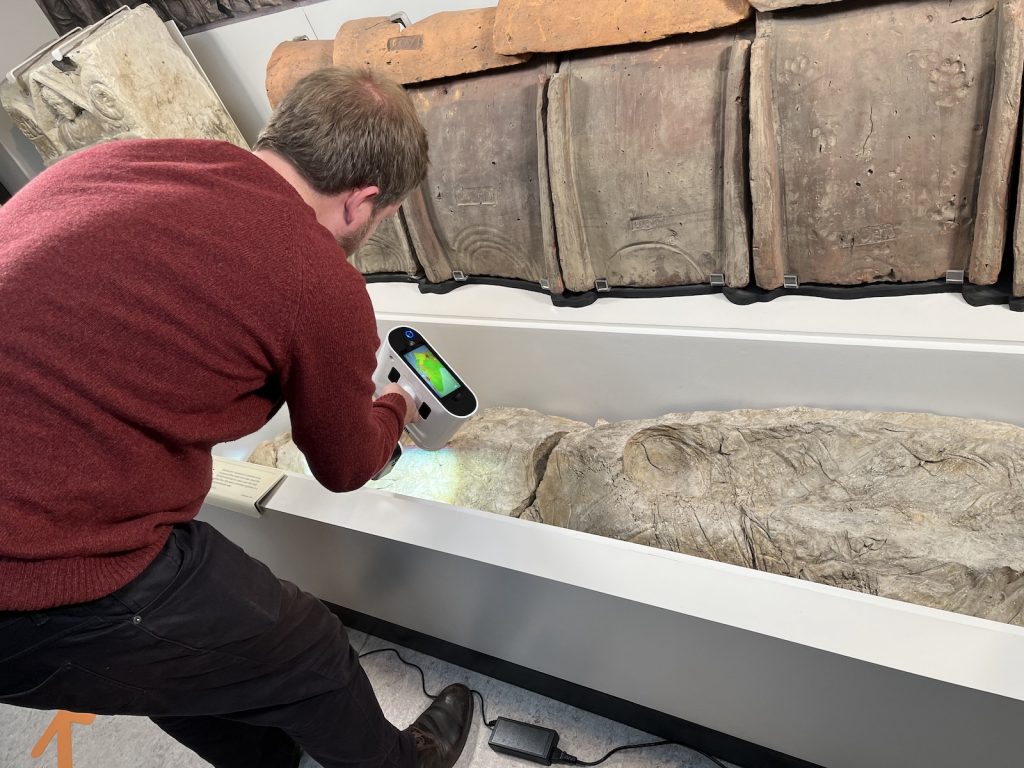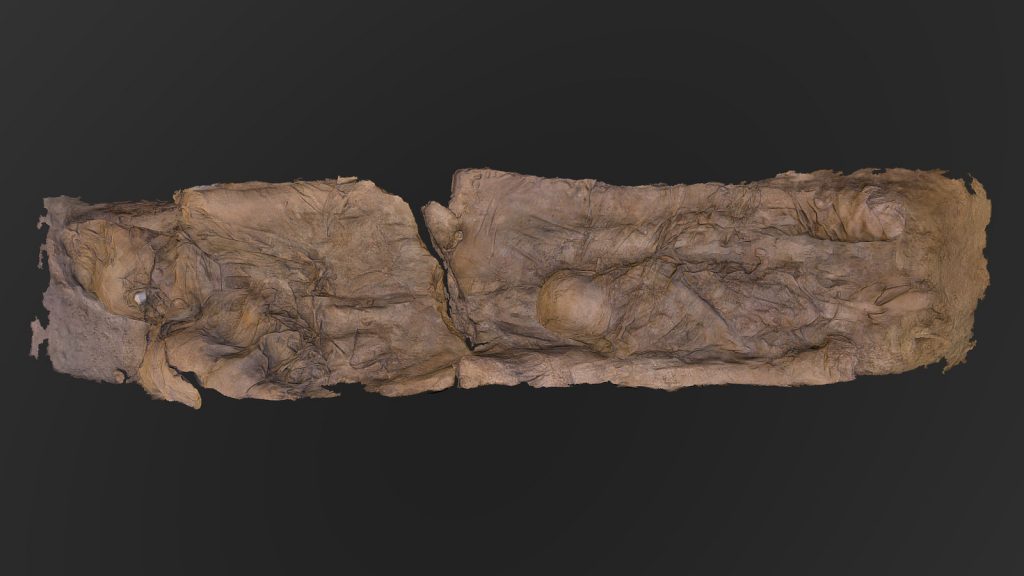Archaeology & History
In a First, Archaeologists in the U.K. Have Used 3D Scans to Study a Mysterious Roman Burial Practice
It's not known exactly why Romans poured liquid gypsum over their dead in their coffins before burial.

It's not known exactly why Romans poured liquid gypsum over their dead in their coffins before burial.

Artnet News

For the first time, archaeologists at England’s York University have used 3D scanning to study a little-understood burial practice of the ancient Romans, revealing details of the burial of a family of three who died together in England.
“The 3D images allow us to witness a poignant family tragedy almost 2,000 years after it occurred, reminding us not only of the fragility of life in antiquity, but also the care invested in the interment of this group of people,” said Maureen Carroll, chair of Roman archaeology at the University of York, in a press release.
The scans reveal fine details such as the ties used to secure the burial shroud over the head of one of the adults and the bands of cloth used to wrap the infant.
Romans sometimes poured liquid gypsum over the clothed bodies of the dead in their coffins prior to burying them. As the gypsum hardened and the bodies decayed, this practice preserved the position and contours of the dead, as well as the imprint of burial shrouds and other clothing.

Courtesy Heritage360.
It is thought to have been a practice only among the well-to-do, since expensive aromatic resins were found in other gypsum burials, also in York, which has yielded some 45 such burials since the 19th century. They have also been discovered in Europe and North Africa.
The Yorkshire Museum, which has an important collection of 16 of these burial casts, undertook the study with the University of York, York Museums Trust, and Heritage360, a research center and technical services provider based at the university.
“The contours of the three individuals in the gypsum can be seen with the naked eye, but it is difficult to make out the relationship of the bodies to each other and to recognize how they were dressed or wrapped,” Carroll said. “The resulting 3D model clarifies these ambiguities in stunning fashion.”
More Trending Stories:
Is Time Travel Real? Here Are 6 Tantalizing Pieces of Evidence From Art History